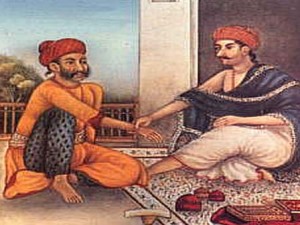5
$434.96
Mini Cart

Eight (Asht) fold (Bidha) Examination (Pariksha) Provides a clear picture of nature of ailment and patient’s general condition. Involves the examination of pulse, tongue, voice, skin, eye, general appearance, urine & stool.
1. Examination of general appearance (akriti pariksha)
In Ayurveda texts it refers to the doshic influences that reflect on the face of the patient helping the physicians to gauge the basic constitution and the nature of the disease.
The other measures includes examining the skin colour, body structure and strength, height and weight.
2. Examination of the eyes (drka pariksha)
The vata, pitta and kapha have different effects on eyes . The person having dry and smoky eyes with burning sensation indicates vatika disease. Yellow colour in eyes and burning sensation indicate diseases caused by pitta. In case of the kapha diseases dullness can be see in the eyes. Aggravated kapha makes the eyes wet and watery, and there is heaviness of the eyelids.
3. Examination of the speech and voice ( shabda pariksha)
The balanced doshas produce natural and healthy voice. The aggravated kapha makes the voice heavy. It becomes cracked under pitta effect and hoarse & rough when afflicted by vata.
4. Examination of the tongue (jivha pariksha)
The pictures of the digestive system especially intestines is generally assessed by the condition of the tongue. A cold and rough tongue bearing cracks indicates a vata dosha. A red or blue colour of tongue indicates a pitta dosha. A white and slimy tongue indicates kapha dosha.
If all the three doshas are aggravated, then the tongue is black and thorny eruptions come out.
5. Examination of the skin (sparsha pariksha)
The important clinical method for examination of skin is palpation. It is also used for assessing the state of organs and tissue. A vata aggravated skin is course & rough with below normal temperature, a pitta-influenced skin has quite high temperature and kapha affected it becomes cold & wet.
6. Examination of the stool (mala pariksha)
The waste of the body in the one form called stool , if stool carries a foul odour and sinks in water then the digestion and absorption of the food is poor. Aggravated “vata” makes the stool hard, dry and grey in colour. Excess pitta makes it green / yellow in colour and liquid in form. And high kapha lines it with mucus.
7. Examination of urine (mutra pariksha)
The most important thing is collection of the urine , the urine should be collected in the early morning not first flow and not last flow the flow in between the urination and stored in the glass bottle. It is usually done by examining the sample of urine and questioning the patient. Pale yellow colour of urine indicates vata dosha. Red colour of urine indicates pitta dosha.
If the colour of urine is white and foams are there, then it indicates the dominance of kapha dosha.
8. Examination of the pulses ( Nari Pariksha)
An experienced ayurvedic physician can assess your body’s nature (prakriti), pathological state (vikruti), imbalances of body type, very subtle observations & even prognosis of disease through the Pulse Reading (Nadi pariksha) . It can provide deep insights into the history of the patient. The ideal time for pulse examination is early morning in empty stomach. It is done at the root of the thumb by examining the radial artery pulse. The arm should be stretched properly and fingers should be in normal stretched position. The pulse is examined for its normal and abnormal state. Normally the pulse is regular, but it becomes irregular after dosha imbalance. It should be avoided after bath, meal and oil massage, when the patient is hungry or thirsty.